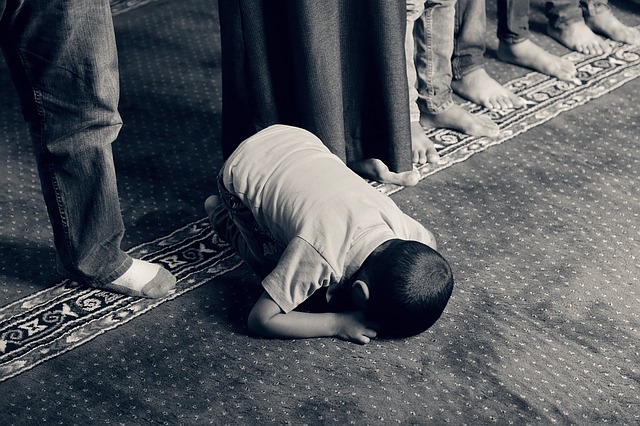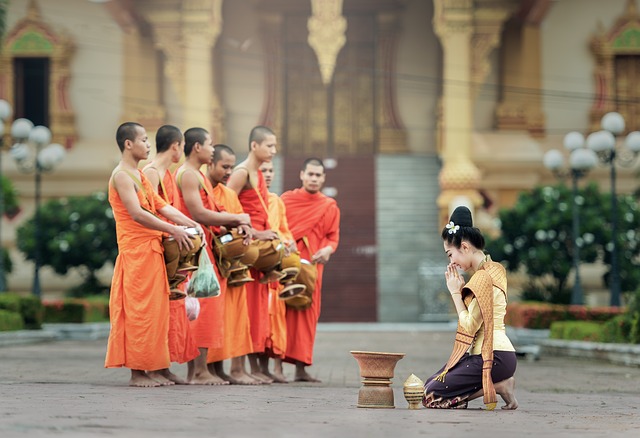Sometimes when you go to a yoga class some teachers are singing weird words, everybody seems to know them and it looks like an alien language. Well, those are mantras and they are known particularly in the Sanskrit language. However, mantras are quite known in other languages as well, and you’ll probably even know them, it’s just a bit different in another culture.
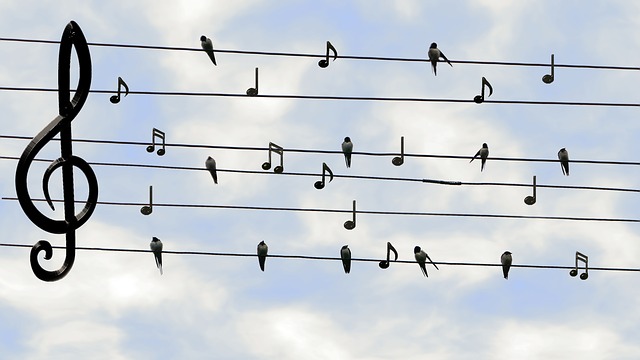
Chanting vs Singing Mantras
The terms chanting and singing mantras will often turn up when you are living a spiritual life. And mostly you’ll find that people give very difficult and complex explanations about what the difference is between chanting and singing, while it is very simple.
Chanting is when there are no instruments involved. So the only instrument that will be used is your voice. And singing is using instruments and the voice to create a harmonious sound. Therefore, most likely in yoga classes you’ll be chanting mantras.
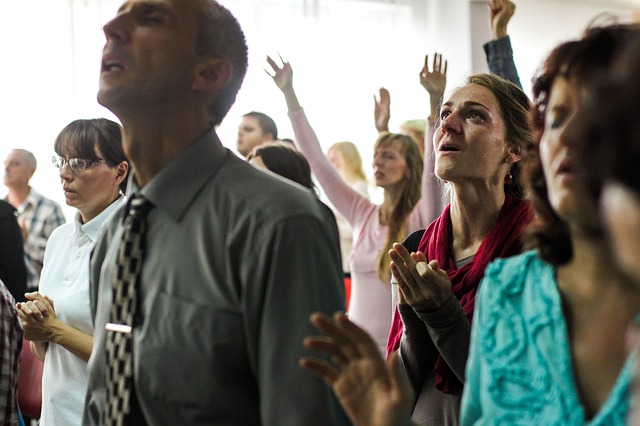
Chanting you’ll mostly find in yoga classes, and most likely you’ll do it before you start the asanas. This is to make sure that your meditation moment gets a bit extended through the singing (which is also great for your throat chakra of course!) before you open your eyes to begin your practice.
Not only that, but I’ve mentioned a bit about devotion in this article and a mantra is a kind of prayer as well. It’s a great affirmation within your yoga practice to strengthen your routine. It’s not only saying that you are devoted, but also that you dedicate your practice to someone. In the beginning, I’d say that it’s best to keep that devotion to yourself as you’ll probably are doing yoga to get a breather in the first place.
But I feel that I’m getting distracted again, and I’m starting to get way off point here :). So I devote my practice now to my focus and I’ll continue with explaining how to use mantras in your daily life or yoga practice.
How to use mantra meditation in your daily life
It’s not that hard to figure out to use mantras. And most likely you’ll find a couple of kirtans in your area as well. Although, they are most likely to be found in bigger cities, where there is a lot more offered. When you are living in a rural area, it’s not always going to be easy to find though. However, you can use mantras in all kinds of different situations. A friend of mine for example always puts on and sings the Gayatri mantra when she starts to cook.
This, of course, is just one example of when you can use a mantra in your daily life. But there are many more ways to use them. I, for example, often used them when I was driving. I’m always completely stressed out when I’m driving in bigger cities and I found that singing mantras while driving was quite relaxing. Of course, you have to make sure that you are still aware of your surroundings, so this is not going to be for everyone ;).
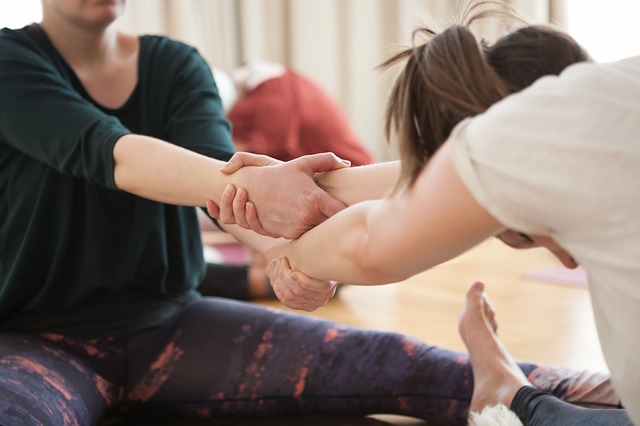
Meditation with mantras is so diverse that there are way too many ways to talk about it. So, for this article, I’ll explain how to do a couple and besides that, I’ll provide you with some mantras that are easy to use at your own home, or if you are a teacher, maybe these will inspire you as well to share with your students.
Using Mantras in Yoga classes (for teachers)
This is a small piece just for the yoga teachers among is. If you are anything like me, thinking you don’t have a great voice to kick off with a mantra, don’t be worried. It’s not about the way you are chanting your mantras, but it’s with what intention that you are performing it.

Your students are coming to you for all sorts of reasons and it’s great to give them a bit of everything, as they are also looking to be a bit more enlightened ;). Of course, you have to see if your audience is fitting for it. If you are teaching in a gym, chances are big that your students won’t be looking for a deep inner journey, so then it might be best to skip the mantra part.
And then of course, when is the best time to use a mantra. And to this, there is no clear answer. Personally, for me, it depended on which mantra I would be using. For example, om Shanti, this one I would typically use after the savasana as you are saying that you want everyone to be at peace, including yourself. This vibration you can only transmit when you feel very Shanti yourself. If you start with this one, while everyone is still in stress mode, it does not transmit at all.
So, look into some mantras and see which ones are fitting for your yoga classes. With the Om mantra, you can’t do anything wrong and you can use it whenever and wherever you’d like.
Mantra Meditation
I’ve talked a lot about malas in this article, and if you would like to deepen yourself into chanting mantras, it might be good to get one of these malas. When you buy a mala, make sure though that you get one with some intersections, this way you won’t be forced to complete the whole 108-beads if you don’t have the time to finish a whole sequence.
To start, first, you’ve got to decide on which mantra to use of course. If you don’t know any that you’d like to use, you can just scroll down and pick on out that fits your needs at this moment.
After that, find a good and quiet place where you can practice. Before you start, it would be good to practice a bit with the mantra. If you haven’t mastered the mantra yet, chances are that you’ll be stuck in your head thinking about the words to come. So, try in the beginning to make the mantra your own. You can do this by going on google and look for the mantra that you like. Choose a video and practice until you know the words by heart.

Alright, now you’ve got your mala, you’ve got your mantra. Now it’s really easy. Be seated in a comfortable position. You might have the idea that you will finish soon, but that’s not true. If you do the whole 108-cycle then you’ll take quite a while to finish. Therefore, sit in a position that you can hold for at least half an hour.
Take the mala in your right hand in such a way that it won’t get entangled. And here’s a video on how to do the movement of the beads:
After watching this video, you know how to use your mala now. So, close your eyes take a couple of breaths first to tune in. and then you are free to start chanting!
Mantras Versus Affirmations

With an affirmation, you are trying to rewire your brain a bit. Meaning that you’ll try to cheat with the power of words (and yes, they do have a lot of power) your mind into thinking something that you aren’t convinced of. If you’ve ever read the books of Louise Hay, you’ll probably know what I’m talking about.
Affirmations are used to get rid of negative thoughts and turning them around. For example, if you feel that you aren’t worth something or someone (which we all think occasionally of course), you can turn this around and make something positive out of it. Which is what you are worth it.
And that’s about it for an affirmation. Of course, it just doesn’t work that you say a sentence once or twice and then magically your mind is rewired. It takes time and effort as well. But I would recommend the books from Louise Hay for this one.
With mantras, you’re also repeating words and sentences, but to connect to a deeper level. In this case, a deeper connection with your soul or with the divinity (deities or gods).
A lot of mantras are dedicated to gods and they are a bit like a prayer. Of course, if you are not such a believer you can still use them. The main goal of a mantra is going into devotion, and this doesn’t necessarily mean being devoted to a god. I feel that there is a lot of misunderstanding in this part. Because if you read the scriptures of yoga or whatever religion, they’re all about how to lead a good life and be the best version of yourself. So, if you don’t feel that you can bring your devotion to a good, then you can always devote yourself to nature, yourself, your family, etc.
And of course, if you’re not comfortable at all using mantras, you can start by using affirmations.
Mantras to use in your meditation

A lot of them are in Sanskrit, so they are not always so easy to get acquainted with, luckily we have our friend YouTube to help us out and these days there are a lot of tutorials on how to pronounce your favorite mantra.
Gayatri Mantra
The mantra that is probably best known (besides Om) is the Gayatri Mantra. I’m not going to give a big explanation about this one and keep it a bit simple. They often say that this mantra is the mother of all mantras. And it is used to bring the light in to get rid of the darkness.
Or translated into human English, this mantra is used to provide you with clarity and to entangle all the twists your mind is putting you through to keep you from the answers that you need. This is still a bit of a wide explanation of course, but you can use this mantra whenever you are doubting about something, or when you feel that you are overthinking things.
The words for this mantra:
oṃ bhūr bhuvaḥ suvaḥ
tatsaviturvareṇyaṃ
bhargo devasyadhīmahi
dhiyo yo naḥ prachodayāt
Here’s a great video to teach yourself the Gayatri mantra:
Asato Ma
This one has been my ultimate favorite one. It’s not such a hard one to learn and it has a great meaning as well. I always see it a bit as the Hindu version of the prayer they always say in AA meetings.
Om Asatoma satgamaya
Tamasoma iyotir gamaya
Mrityorma amritam gamaya
Take us from the false to the truth
From darkness to light
From death, lead me to Immortality
Om Shanti
This one is probably a very known one and possibly the easiest one to chant as well.
It’s just:
Om, Shanti, Shanti, Shanti
Although it’s an easy one, it’s a great one to use with a very powerful meaning as well. It’s a prayer where you are wishing for peace in your body, mind, and soul. What more could you wish for? A new car would be nice of course, but that wouldn’t be so detaching!
Om gam ganapataye namaha
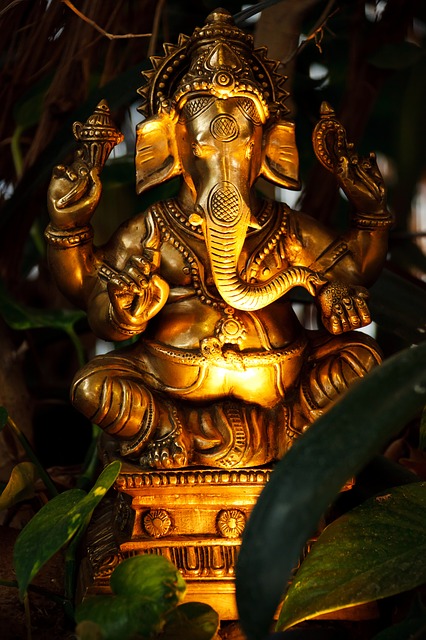
This mantra is a devotional prayer to Ganesha, who is seen as the remover of obstacles. If you’ve traveled to India you’ve probably seen him everywhere! In cars, on the roads, etc. Well, not him in the person of course, but images of statues of him. He’s seen as the god of travels, as he is the one who will guide you the way while you are on the road (this can also be seen metaphorically of course)
This one is also not that hard to chant:
Om gam ganapataye namaha
Om Ah Hum
This mantra is a Tibetan or Buddhist mantra. In Buddhism, there are no gods involved as they see everyone as a god, as everyone has been created out of the same energy. However, this mantra is used to purify and clarify our bodies and mind. It’s also not such a hard one to chant and it’s also a shorter version of Om mane Padme hum.
Conclusion
So, that was it about mantras for now. There is a lot more to discover, so maybe in the future, I’ll do another piece as well. Which makes me wonder as well, which mantra is your favorite? And how do you like to use mantras in your practice? Let me know in the comment section down below!
Nama-stay wonderful everyone!

